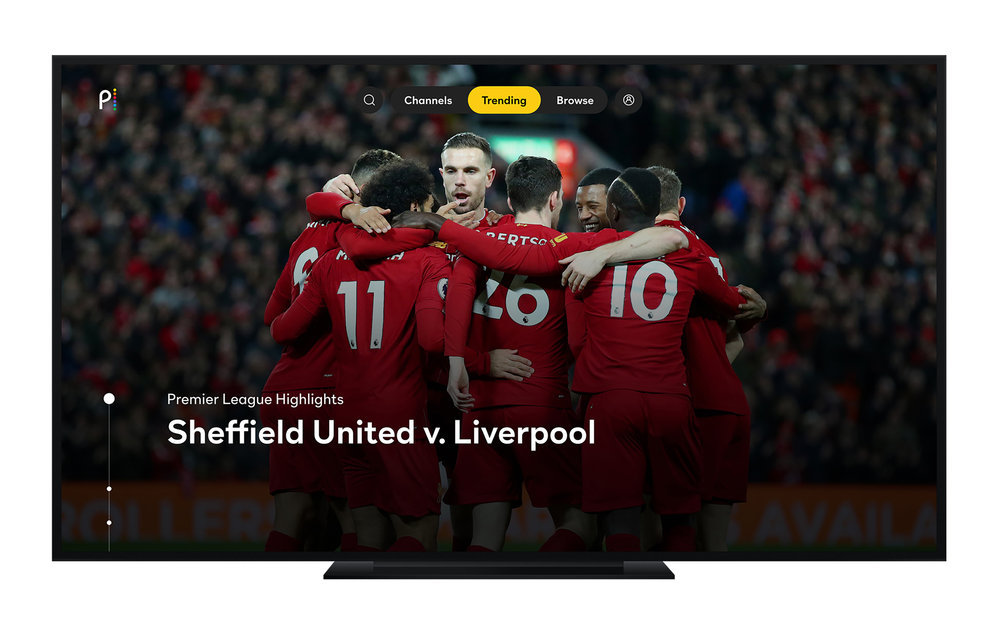Peacock Pulls In $500 Million During Record NBCU Upfront
Super Bowl spot sells for more than $6 Million

This year’s upfront market was so hot that Comcast’s incipient streaming service Peacock collected $500 million in commitments from advertisers.
Peacock’s haul contributed to a 67% increase in digital and streaming upfront volume to $1.5 billion for NBCUniversal.
Also Read: Roku Finishes Upfront With Double Last Year’s Volume
The shift in viewers to streaming and digital and a move by advertisers to buy more-targeted, cross-platform campaigns made this upfront different than past markets. NBCU said it has been making changes in its ad sales unit to take advantage of those changes with broader offerings across global and local markets, and more technology and automation.

NBCU wasn’t as precise about its upfront results as a whole, saying that overall volume and pricing rose by double digits from last year and topped the record 2019-20 upfront, prior to the 2019-20 season, when upfront volume was nearly $7 billion including the Olympics.
“We’ll have growth in digital and linear overall,” said Mark Marshall, co-president of NBCU Advertising Sales and Partnerships told B+C. “The big growth comes on the digital side of it. But we went into the market knowing we were one of the few places that had capacity.’”
Last month, NBCU CEO Jeff Shell told an investors meeting that NBCU was “pretty much done” with its upfront negotiations. “Our approach allowed us to go out early in the market and take advantage of the strength of the market,” he said.
The smarter way to stay on top of broadcasting and cable industry. Sign up below
At this point, all of the broadcasters and most of the cable networks are done with their upfronts.
With ratings down and ad inventory tight around the industry NBCU had big events to offer advertisers, led by the Super Bowl, the Winter Olympics and the World Cup on Telemundo.
NBCU said the Super Bowl was 85% sold or in discussions at this point. “I think there’s a good possibility that we will be sold out of the Super Bowl by the time this season kicks off,” Marshall said Commercials being sold now are going for more than $6 million, he said. That’s up from top prices of about $5.5 million last year.
In addition to sports, “Peacock was the biggest add of capacity,” Marshall said. “Peacock comes in with broadcast primetime reach over the course of a month, even though it’s only a year old. It was an easy way to slide into the connected TV world.”
The $500 million in upfront ad commitments is up from $100 million last year.
There have been many reports that while Comcast has reported 42 million sign-ups for Peacock, its actual base of customers that use or pay for the service is a fraction of that. But Marshall said that Peacock’s growth represents an “unbelievable transformation of something that didn’t exist 24 months ago.”
Marshall said NBCU expected this year’s upfront market to be exceptionally strong, based in part on the scatter market and also by post-pandemic behavior it was seeing in key categories.
“We absolutely knew that this was going to be this kind of lightning in a bottle year because we’ve never really since World War II just stopped the economy for a year and then flipped it back on,” Marshall said.
Marshall said NBCU identified four categories that would be growing by $1 billion each in entertainment, pharma, tech and auto. On top of that, there was surprising strength in other categories such as restaurants, which were spending two times what they spent in 2019-20, and retail.
Previous upfront reports had prices for broadcast increasing by 19% to 22% for broadcast prime and 9% to 12% for cable. Marshall said that because NBCU was selling its inventory as part of a single platform, “more and more the discussion is around an aggregate number, where you’re looking at the rollup of all the impressions from all the dayparts including digital now.”
Marshall said that NBCU is selling about the same percentage of its inventory as it has in the past and will be able to take advantage of continuing strength of the scatter market.
“We followed the macro trends in the categories and we had a real good sense of where the markets would be and what the marketplace would look like and partnered with the agencies to make the deals that made sense at the right time,” he said.
Jon has been business editor of Broadcasting+Cable since 2010. He focuses on revenue-generating activities, including advertising and distribution, as well as executive intrigue and merger and acquisition activity. Just about any story is fair game, if a dollar sign can make its way into the article. Before B+C, Jon covered the industry for TVWeek, Cable World, Electronic Media, Advertising Age and The New York Post. A native New Yorker, Jon is hiding in plain sight in the suburbs of Chicago.

